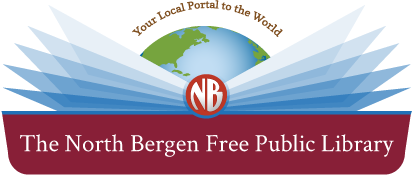About
Library History
Library Mission Statement
The mission of the North Bergen Free Public Library is to inspire lifelong learning, advance knowledge, and strengthen our diverse community with a variety of print and electronic resources, programs, knowledgeable staff, timely service and state-of-the art technology within a warm, user-friendly environment.
NBPL History
History of North Bergen
Michael Pauw, burgomaster of Amsterdam was granted acres upon acres of land in the new world by order of the King. Being of old age, Pauw passed this opportunity to settle this new land himself to a small group of men, trusted settlers.
As the group of new settlers approached the foreign land of America they were greeting by vast expanses of hills, or what Indian tribes of the area referred to as “Weehawkon” which meant rocks that look like trees. Excited to finally reach America, the new settlers exclaimed “Berg! Bergen!”
The settlers had hoped to settle a successful and prosperous territory. But trouble among the new land settlers and the already established Lenni-Lenape Indian tribe (who already occupied the land) arose. In the hope of reaching peace the New Netherlands Government from Manhattan Island intervened.
Urging settlers to turn land over to individual owners, this new community was established as the Village of Bergen on September 5, 1661. The Village of Bergen was the first municipality in the territory which is now known as New Jersey.
Before long, after losing its trading posts, the Village of Bergen grew. Now there were many families living and prospering in the village and the nearby lands. After being established as the Village of Bergen, the people of the land turned to Governor Phillip Carteret of New Jersey for incorporation under the name of “The Town and Corporation of North Bergen.” This was the very first time the word “North” was incorporated into the Village’s name.
In 1693, just thirty-two years of the Village of Bergen’s settlement, Hudson County was formed, and the township of North Bergen was one of its first successful municipalities.
The Town and Corporation of North Bergen was booming. Many new settlers built homes in both the hills and the lowlands. Many reaped the benefits of such rich soil, providing fruit and vegetables, not only for their families, but many others in the area. By 1700 the first waterway transportation system was developed, providing regular ferry service to and from the island of New York.
But as time marched on, so did newly developed armies. In 1775 armies of men marched down from New England and through North Bergen in order to join the Continental Army of George Washington. Many North Bergen residents were then prompted, through this army march, to join the ranks of the rebels.
Many young officers were welcomed and rejoiced. One of which was Marquis de Lafayette, whom North Bergen officially received. His arrival was celebrated throughout all of North Bergen.
Changes marked the growth and the time of North Bergen. New Durham was now the most prosperous community within the area now known as North Bergen. But in 1848, fear of unnatural forces lead to entire families and groups of people moving outside the Five Corners of New Durham. In 1849 Hoboken seceded from North Bergen, followed by Weehawken in 1859. Secession was now fashionable. In 1861 towns known as West Hoboken and the Township of Union (which included West New York and Guttenberg) also seceded from North Bergen. As is trend, in 1900 Secaucus too became independent of the Town and Corporation of North Bergen.
By this time North Bergen had its own government in place. In 1852 the town of North Bergen was governed by a Board of Five Selected Men. One of these men was William H. Danielson who lived at 1611 Bergen Turnpike.
As more and more families settled into daily life in North Bergen, the local government recognized a need for schools. Following the Civil War, the Granton School was built, a one story structure with only one teacher: Miss Mary A. Carmody. This one story building was in use until 1871 when a new two-story building was erected. The four room, brick structure was constructed on the old Secaucus Road in the homestead section of North Bergen. Now, this school is known as Franklin School.
Besides the development of school, places of worship were also developed and constructed as early as 1845 within the township of North Bergen. Up until this point in time the people of North Bergen found their livelihood resided in farming. But as times changed, so did their source of income. A glue factory popped up and many men were famous wheelwrights – men who, not only repaired, but also built custom wooden wheels. Two such men were Peter Jackson and Tom Eckerson, who lived at 1116 Hackensack Plank Road.
North Bergen also welcomed a new, unconventional means of mail delivery. Women of the town made it a habit to call upon neighbors, asking for any letters or parcels to go to the post office. Not only was business booming in North Bergen, but transportation was too. In 1892 the very first trolley car was put into operation, opening the gates for people to easily commute from North Bergen to New York City and vice versa.
By 1920s the population had significantly increased – from a few early settlers to forty-six thousand residents. This tomahawk shaped city is five point five seven (5.57) square miles long. As of 2010 North Bergen is home to a total of sixty thousand, seven hundred and seventy-three (60,773) residents.
© 2020 The North Bergen Free Public Library. All rights reserved. Developed by AlphaDog Solutions.
